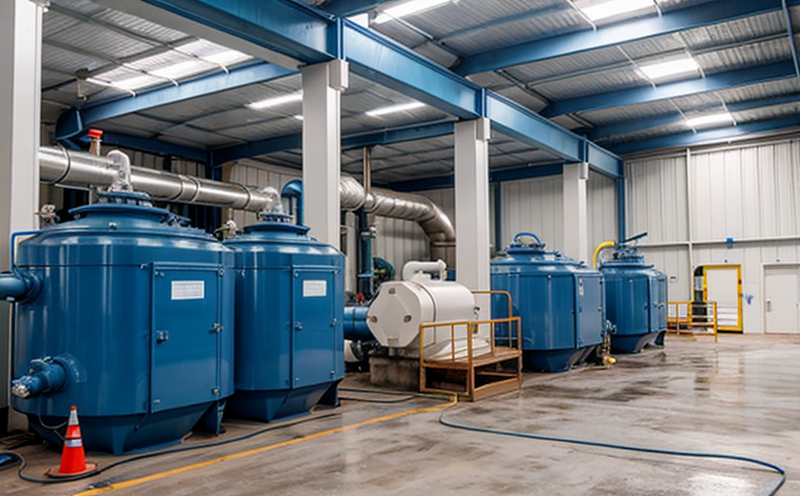EPA Method 1600 Enterococci Testing in Ballast Water
The Environmental Protection Agency's (EPA) Method 1600 is designed to determine the presence of enterococci, specifically colony-forming units per liter (CFU/L), in ballast water. This method is critical for compliance with regulations aimed at preventing the spread of harmful pathogens and invasive species through maritime transport.
The test procedure involves a series of steps that ensure accurate quantification of enterococci in water samples. The process begins with sample collection, where water samples are taken from ships' ballast tanks under controlled conditions to minimize contamination. These samples are then transported to our laboratory for analysis using the EPA Method 1600 protocol.
The core of the testing involves:
- Preparation and Dilution: Samples undergo dilution steps to ensure that they fall within the optimal range for accurate quantification by the method's detection limits.
- Incubation: Cultures are incubated under specific conditions, ensuring optimal growth of enterococci. This step is critical as it allows for precise enumeration of colonies.
- Detection and Counting: Colonies on agar plates are counted, providing a direct measure of the concentration of enterococci in the sample.
The final result is expressed as CFU/L, which helps stakeholders understand the level of contamination present. This information is vital for compliance with international regulations such as the Ballast Water Management Convention (BWM), which mandates that ships reduce the number of viable organisms to a specified level before discharging ballast water.
The precision and accuracy of EPA Method 1600 are paramount, especially given its role in ensuring maritime safety. Our laboratory adheres strictly to this protocol, using state-of-the-art equipment and trained personnel to ensure reliable results.
Why It Matters
The implementation of EPA Method 1600 is crucial for several reasons:
- Regulatory Compliance: Adherence to international standards like the BWM Convention ensures that ships can navigate global waters without violating environmental laws.
- Invasive Species Prevention: By reducing the number of viable organisms in ballast water, we help prevent the introduction of invasive species into new environments.
- Public Health Protection: The method helps ensure that ballast water does not contain harmful pathogens that could pose risks to human health.
The significance of these tests cannot be overstated. Compliance with such regulations is essential for maintaining the integrity of global ecosystems and safeguarding public health. Our services play a pivotal role in ensuring that ships meet these stringent requirements, thereby contributing to environmental sustainability and public safety.
Customer Impact and Satisfaction
Our clients benefit significantly from our EPA Method 1600 testing service:
- Enhanced Compliance: By providing accurate test results, we help ensure that your operations are in full compliance with international regulations.
- Risk Mitigation: Our services reduce the risk of non-compliance penalties and potential environmental damage caused by invasive species or harmful pathogens.
- Reputation Enhancement: Demonstrating a commitment to environmental stewardship through rigorous testing can enhance your company's reputation and brand image.
We strive for customer satisfaction by offering reliable, accurate results and timely service. Our team works closely with you to ensure that all aspects of the testing process meet your specific needs and expectations.
Environmental and Sustainability Contributions
The EPA Method 1600 Enterococci Testing in Ballast Water contributes significantly to environmental sustainability:
- Invasive Species Prevention: By reducing the introduction of invasive species, we help preserve local ecosystems.
- Habitat Protection: Preventing the spread of harmful organisms helps protect marine habitats and biodiversity.
- Public Health: Ensuring ballast water is free from pathogens contributes to public health by preventing outbreaks in coastal communities.
Our services are part of a broader effort aimed at promoting environmental responsibility within the maritime industry. By ensuring that ships comply with international standards, we contribute to a cleaner and safer environment for all.





